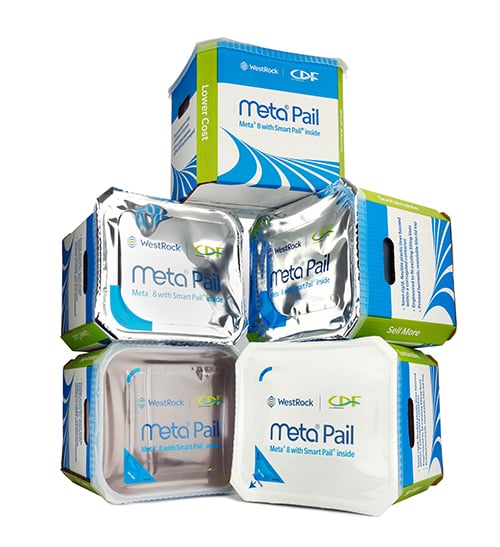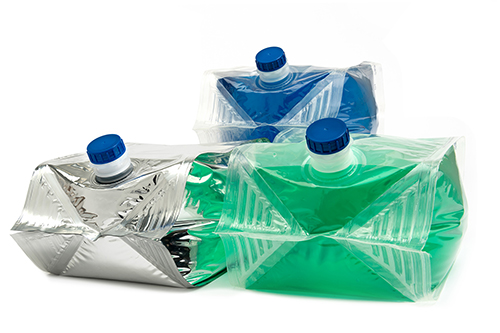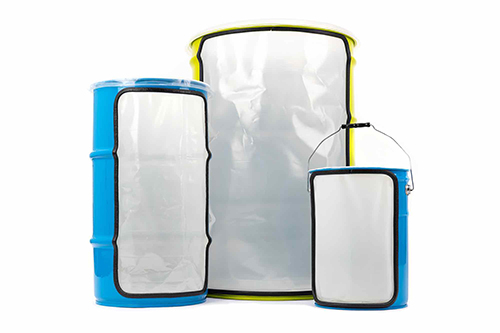The Evolution of Packaging Through 2028
More so than ever before, the internet has changed consumer buying trends across the board. We can buy virtually anything online now—even a car! (Thanks, Carvana.) As well, consumers expect instant results while purchasing pretty much anything. What’s this have to do with packaging?
Well, prior to purchasing, they are also doing their research online: price and performance comparisons, peer reviews, and background
checks on brands and company social responsibility profiles. Yes, they really do. And they are more than willing to leave their own peer reviews and be very publicly vocal regarding their satisfaction or dissatisfaction with a product, service, or company philosophy. As we’ve written about, Millennials and Gen Z and Xers have purchasing influence that has the power to change the packaging landscape as we know it.
How does this affect packaging? This translates into a mega-sellers like Amazon completely changing their packaging program throughout vast supply chains to appeal to the sustainability sensibilities of consumers. Customers made it known that they wanted packaging that can protect their products in transit … and the environment in the long run.
Influencing the B2B Packaging Ecosystem
This speaks to the trend we see penetrating the B2B packaging sector—as it has in almost every industry. (Online, direct-delivery car buying? Who’d a thought?) Consumer buying habits extend into the B2B mindset, and ultimately influence the B2B ecosystem. After all, as we recently talked about in this article that discusses the changing needs of the dairy industry, we are people doing business with people and the concerns we have on a personal level—be they for the planet, our own health and safety, or everyday lifestyle conveniences—become benchmarks we expect in business. So when we read this article by Smithers (a leading provider of testing, consulting, information, and compliance services) about the four key trends expected to shape the future of packaging to 2028, we perked up and wanted to share the basics with you.
4 Future Trends
The research cited in the article is from an extensive study, The Future of Packaging Long-Term Strategic Forecast to 2028. The Cliff Notes takeaway: “… between 2018 and 2028 the global packaging market is set to expand by almost 3% per annum, reaching over $1.2 trillion.”
According to the findings, the evolution of the packaging industry will be influenced by these four trends:
- Economic/Demographic Growth
The global economy is forecast to continue its upward trajectory, which also will help support growth in emerging consumer markets.
Population is expected to increase and urbanization is a counterpart of that, which, according to Smithers, will “ … increase consumer incomes for spending on consumer goods, as well as exposure to modern retail channels and the aspiration among a strengthening middle class to engage with global brands and shopping habits.”
Rising life expectancy and an aging population will also give rise to the increased need for healthcare and pharmaceuticals. With all these considerations, keep in mind that consumption on a personal level influences the supply chain, crossing over into B2B packaging markets.
- Packaging Technology
Smithers tells us, “Companies will address sustainability issues alongside an increase of flexible packaging which is driven by demand for more light-weight, convenient and portable products.”
Consumers are scrutinizing packaging, with a high emphasis on high-volume, single-use plastic waste. Among the strategies being employed by the packaging industry are the use of alternative materials and designs that make products easier to recycle and improve the overall recycling and processing of waste. With that, “… brands are increasingly keen for packaging materials and designs that demonstrably show their commitment to the environment.”
There is also a push to minimize food waste. Up to 40% of food produced globally goes uneaten, and modern packaging technology can make a sizable impact on this. Flexible packaging can help: high-barrier pouches and retort cooking capabilities add shelf-life to consumables. With consumer markets, in less developed areas where refrigeration is unavailable, this type of packaging can be very beneficial. On this topic, the study remarks that minimizing food losses “also supports the wider use of intelligent packaging to cut waste within distribution chains and reassure consumers and retailers on the safety of packaged foods.”
- Consumer Trends
Online shopping will continue to grow rapidly, calling for an “elevated demand for packaging solutions—especially corrugated board formats—that can safely ship goods through the more complex distribution channels.”
The overall demand for packaging solutions that provide convenience and portability for fast-paced lifestyles spans the food, beverage, pharmaceutical, and supplement markets.
Another interesting find is that, especially with younger age groups, there appears to be more single-person living, which results in more frequent grocery trips and buying goods in smaller quantities. “This has driven growth within the convenience store retailing, as well as boosting demand for more convenient, smaller size formats.”
- Brand Owner Trends
The report also concludes that fast moving consumer goods are spiking an increase in the internationalization of many brands. The World Wide Web has, indeed, created a global economy, which is on target to accelerate.
“Industry consolidation in merger and acquisition activity in end-use sectors such as food, beverages, cosmetics, is also forecast to continue. As more brands come under the control of one owner, their packaging strategies are likely to become consolidated.”
Predicting the Future?
That last point can carry important ramifications when we remember that people are interested in the corporate profile as it relates to social responsibility and sustainability; this information can dramatically impact end-use consumption decisions.
There is a widely held belief in modern psychology that the best predictor of future behavior is past behavior. Sure, in some situations, it’s undeniable. Though at CDF, we like to look to the future as a creative endeavor, not be a passive bystander to it. It’s why we innovate with our mindful packaging products and also why we keep our sites on trends—both consumer and commercial—to help us and our customers navigate the industrial packaging landscape.
Many of the points made in the above study hit home with us. (Here are some other industrial packaging trends we wrote about recently.) It’s why, years ago, we began actively engineering mindful packaging solutions that address many of the concerns stated above. Our Meta Pail, bag-in-box, and liners are packaging options that allow companies to lead with positive sustainability measures.
Meta® Pail
Meta® Pail was designed to disrupt the traditional plastic pail market—and it has. The Meta Pail is a semi-rigid, vacuum-formed, plastic  pail insert with a hermetically sealed laminated film lid, housed within an 8-sided corrugated Meta container. Meta Pail was developed for transporting semi-viscous, solid, and most liquids currently shipped in plastic pails. Meta Pail is highly customizable and various industries benefit from everyday conveniences Meta Pail provides.
pail insert with a hermetically sealed laminated film lid, housed within an 8-sided corrugated Meta container. Meta Pail was developed for transporting semi-viscous, solid, and most liquids currently shipped in plastic pails. Meta Pail is highly customizable and various industries benefit from everyday conveniences Meta Pail provides.
The material reduction and sustainability statistics are impressive! They speak for themselves:
- Meta Pail uses less packaging, lighter-weight materials, and weighs approximately 60% less than a plastic pail
- Reduced impact on climate change (CO2emissions) by 52% over rigid pails
- 72% less solid waste than rigid pails
- 64% less energy usage than rigid pails*
- Recyclable components: HDPE pail and corrugated container
Bag-In-Box
Bag-in-box packaging is a flexible package—with an inner receptacle and an outer package. Flexible bag-in-box containers use significantly less plastic than rigid containers—in fact, 80% less plastic. This is an important distinction for companies building their environmental reputations and looking for more sustainable packaging solutions. Less plastic translates to a more favorable disposal and recycling profile, and savings on time, money, and efficiency with transportation and storage. Energy consumption at all stages of manufacture, use, and disposal of bag-in-box flexible packaging are less as compared to rigid containers, which means decreased carbon emissions during packaging manufacture, product filling, transportation, recycling, etc.
Here are a few of bag-in-box sustainability statistics:
- Uses 20% less energy to produce than rigid pails.
- CO2emissions during transportation are decreased by 50% compared to competitive rigid containers.
- Rectangular shape minimizes dead space by a 3:1 ratio, allowing more product per pallet.
- Maximizes shipping capacity: 1 full truckload of bag-in-box is equivalent to 10 truckloads of rigid pails.
- According to the Flexible Packaging Association, flexible materials produce 75% fewer carbon emissions than the next closest packaging option.
Liners

We have a number of liners, perfect for particular applications and customer requirements. Here’s a quick rundown of them—find more information on their respective product pages.
Form-Fit IBC Liners work seamlessly—literally—during high-speed or difficult fills, and keep out oxygen for aseptic-requirement products. They are manufactured to form fit the internal shape of your intermediate bulk container.
IBC Pillow-Shaped Liners are pillow-shaped flexible containers that are typically constructed of two or three plies of linear low-density polyethylene and a barrier film when used for oxygen-barrier applications.
Air-Assist Liners are specially designed for convenient dispense and improved evacuation of high viscosity products, providing a smooth flow of product. The Air-Assist liner features a Form-fit liner with an attached air bladder. As the air bladder is inflated, it pushes against the Form-fit liner, forcing the viscous product out of the bottom dispense fitment, resulting in less residual product left in the liner.
Drum Liners provide a clean, economical, and sustainable way to get the most use out of a steel drum—or any drum. Using a liner helps keep the drum clean and ready for re-use or recycling. Steel drums, with or without liners, are regularly “reconditioned,” which means they are cleaned by a third-party reconditioner and sold to be re-used. Adhesives and greases can be difficult to clean, so reconditioning isn’t always a viable option to ensure an extended life cycle of a drum. When using a liner inside drums, it makes the drum more palatable for a reconditioner to clean and get it back into a close-looped system. We wrote extensively about the many sustainable benefits of drum liners in this article.
keep the drum clean and ready for re-use or recycling. Steel drums, with or without liners, are regularly “reconditioned,” which means they are cleaned by a third-party reconditioner and sold to be re-used. Adhesives and greases can be difficult to clean, so reconditioning isn’t always a viable option to ensure an extended life cycle of a drum. When using a liner inside drums, it makes the drum more palatable for a reconditioner to clean and get it back into a close-looped system. We wrote extensively about the many sustainable benefits of drum liners in this article.
Are You Trending?
This discussion sheds light on how consumer trends influence industrial packaging, and how it can continue to make a difference it the lives of everyone it impacts—directly and indirectly—in the supply chain. What plans has your company made for your packaging future?
We’d love to help you prepare for the future of packaging today. Contact us to talk with a packaging expert to see how we can customize a packaging solution for you.